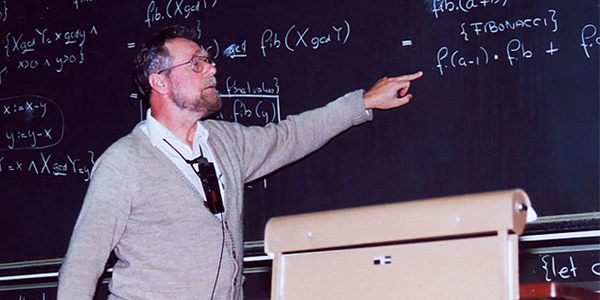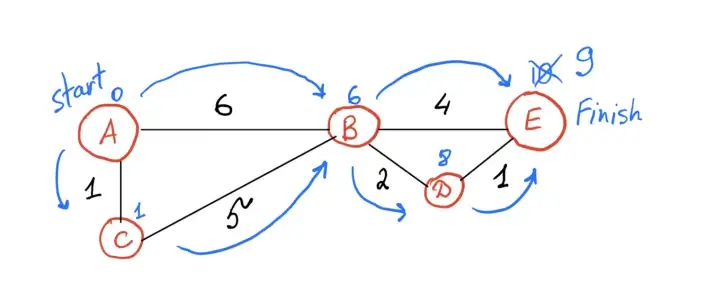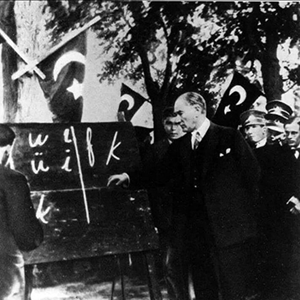Edsger Wybe Dijkstra
Published:
 Edsger Wybe Dijkstra was a Dutch computer scientist and mathematician who made significant contributions to the field of computer science. He was born on May 11, 1930 in Rotterdam, Netherlands. In 1951, Dijkstra began studying theoretical physics at the University of Leiden. However, he soon switched to mathematics and theoretical physics at the University of Amsterdam. He graduated in 1954.
Edsger Wybe Dijkstra was a Dutch computer scientist and mathematician who made significant contributions to the field of computer science. He was born on May 11, 1930 in Rotterdam, Netherlands. In 1951, Dijkstra began studying theoretical physics at the University of Leiden. However, he soon switched to mathematics and theoretical physics at the University of Amsterdam. He graduated in 1954.
In 1956, Dijkstra began working as a programmer at the Mathematical Center in Amsterdam. It was here that he first became interested in computer science and began working on his early research in the field.
In 1959, Dijkstra was appointed as an assistant professor at the Eindhoven University of Technology in the Netherlands. He worked there until 1962 when he was appointed as a professor of mathematics at the same university.
In 1968, Dijkstra published a paper on a shortest path algorithm, which later became known as Dijkstra’s algorithm. This algorithm is widely used to find the shortest path between two points in a graph and is considered to be one of the most important algorithms in computer science.
 In 1972, Dijkstra was appointed as a professor of computer science at the University of Texas at Austin in the United States. He held this position until his retirement in 1999. During this time, he continued to work on a variety of research projects in the field of computer science, including automated theorem proving and concurrent programming.
In 1972, Dijkstra was appointed as a professor of computer science at the University of Texas at Austin in the United States. He held this position until his retirement in 1999. During this time, he continued to work on a variety of research projects in the field of computer science, including automated theorem proving and concurrent programming.
One of Dijkstra’s most notable contributions to the field of computer science was his work on the shortest path algorithm, also known as Dijkstra’s algorithm. This algorithm is used to find the shortest path between two points in a graph, and it is widely used in various fields such as transportation, networking, and logistics. Dijkstra’s algorithm is considered to be one of the most important algorithms in computer science and is still widely used today.
In addition to his work on the shortest path algorithm, Dijkstra also made significant contributions to the field of artificial intelligence. He was one of the pioneers in the development of automated theorem proving, which is the process of using a computer program to prove mathematical theorems. He also worked on the development of concurrent programming, which is the process of writing computer programs that can execute multiple tasks at the same time.
Dijkstra was also known for his work on the development of formal methods for the verification of computer systems. He believed that the development of reliable computer systems was crucial for the advancement of society, and he was an advocate for the use of formal methods to ensure the reliability of computer systems.
Dijkstra was also a highly respected teacher and mentor. He held several academic positions during his career, and he is known for his ability to explain complex concepts in a clear and understandable way. Many of his students went on to become leading figures in the field of computer science.
In 2002, Dijkstra passed away on August 6th.
Some popular quotes of him:
“Simplicity is a great virtue but it requires hard work to achieve it and education to appreciate it.”
“The question of whether a computer can think is no more interesting than the question of whether a submarine can swim.”
“Computer science is no more about computers than astronomy is about telescopes.”
“Testing can be used to show the presence of bugs, but never to show their absence.”
“If debugging is the process of removing software bugs, then programming must be the process of putting them in.”
“The art of programming is the skill of controlling complexity.”
“The structure of a program should reflect the structure of the problem it solves.”
“The competent programmer is fully aware of the strictly limited size of his own skull; therefore he approaches the programming task in full humility, and among other things he avoids clever tricks like the plague.”

 The year 2023 was full of various experiences for me. I took on the role of an Assistant Professor, and the journey had unexpected events like a major surgery, health issues within my family, starting a website, and picking up new hobbies. This post gives an honest overview of the good and bad moments that shaped my year. The foundation of everything in life is undoubtedly health. Without it, even the biggest achievements and detailed plans can fall apart. Health quietly influences our daily activities, professional goals, and personal relationships.
The year 2023 was full of various experiences for me. I took on the role of an Assistant Professor, and the journey had unexpected events like a major surgery, health issues within my family, starting a website, and picking up new hobbies. This post gives an honest overview of the good and bad moments that shaped my year. The foundation of everything in life is undoubtedly health. Without it, even the biggest achievements and detailed plans can fall apart. Health quietly influences our daily activities, professional goals, and personal relationships.  Ever wondered who the superheroes of the Java world are? Java Champions are like the rock stars of Java programming. They’re not just good; they’re exceptional! These are people who have shown their love for Java in outstanding ways. Java Champions are recognized as elite members of the Java community who have made significant contributions in various ways. Unlike certifications or titles that are earned through formal channels, becoming a Java Champion is an acknowledgment of a person’s ongoing and sustained efforts in the Java ecosystem.
Ever wondered who the superheroes of the Java world are? Java Champions are like the rock stars of Java programming. They’re not just good; they’re exceptional! These are people who have shown their love for Java in outstanding ways. Java Champions are recognized as elite members of the Java community who have made significant contributions in various ways. Unlike certifications or titles that are earned through formal channels, becoming a Java Champion is an acknowledgment of a person’s ongoing and sustained efforts in the Java ecosystem.  On November 24th, we observe Teachers’ Day in Turkey, a day that holds great importance and emphasizes the crucial role of education in our society. Mustafa Kemal Atatürk, a military leader and statesman, understood how education could profoundly shape a nation’s destiny. He believed that the progress and prosperity of a society were closely tied to the quality of its education system. Atatürk firmly believed that a well-educated and enlightened citizenry was the cornerstone for building a modern, democratic, and forward-thinking nation.
On November 24th, we observe Teachers’ Day in Turkey, a day that holds great importance and emphasizes the crucial role of education in our society. Mustafa Kemal Atatürk, a military leader and statesman, understood how education could profoundly shape a nation’s destiny. He believed that the progress and prosperity of a society were closely tied to the quality of its education system. Atatürk firmly believed that a well-educated and enlightened citizenry was the cornerstone for building a modern, democratic, and forward-thinking nation.